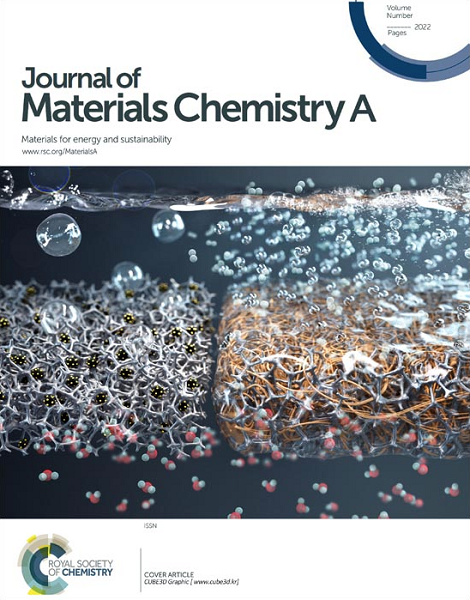具有优越电位窗口和速率能力的超级电容器在高熵水电解质中的富阴离子溶剂化结构
IF 9.5
2区 材料科学
Q1 CHEMISTRY, PHYSICAL
引用次数: 0
摘要
水电解质作为超级电容器(SCs)的合适电解质的使用在很大程度上取决于工作电池电压的打开,同时保持良好的倍率能力,以便在多次循环中获得高能量和功率密度。电解质工程具有阴离子和/或溶剂丰富的溶剂化结构,最近已经在任何类型的电池中进行了探索,以提高在高压下的间相稳定性,通常是通过形成SEI。在碳电极中,这种方法不仅扩展了工作电压的范围,而且平衡了阳离子和阴离子固有的不同电化学稳定性。在此,我们在H2O、DMSO和CH3CN的溶剂混合物中制备了由两种具有共同阳离子的离子液体(例如EMIMTFSI和EMIMBF4)组成的电解质。我们发现,具有最丰富的溶剂化结构的电解质(即,在阳离子周围有许多不同的阴离子)最有效地扩大了电解质能够工作的电池电压(例如,高达2.2 V)。有趣的是,这种极其丰富的溶剂化结构也表现出了不同离子的最佳传输特性,最终,在高功率密度下,这些离子能够很好地保持能量密度。本文章由计算机程序翻译,如有差异,请以英文原文为准。
Anion-Rich Solvation Structures in High Entropy Aqueous Electrolytes for Supercapacitors with Superior Potential Windows and Rate Capabilities
The use of aqueous electrolytes as suitable electrolytes for supercapacitor (SCs) strongly depends on the opening of the operating cell voltage while preserving good rate capabilities so to obtain high energy and power densities over numerous cycles. Electrolyte engineering with anion- and/or solvent-rich solvation structures has been recently explored in batteries of any sort to enhance the interphase stability at high voltages, typically by the formation of a SEI. Less explored has been this approach in SCs to not only extending the range of operational voltage but also balancing the inherently distinct electrochemical stability of cations and anions with carbon electrodes. Herein, we prepared electrolytes composed of two ionic liquids with a common cation (e.g., EMIMTFSI and EMIMBF4) in solvent mixtures of H2O, DMSO and CH3CN. We found that the electrolyte with the richest solvation structure (i.e., with many and diverse anions that surrounded the cation) was the most effective to widening the cell voltage at which the electrolyte is capable to operate (e.g., up to 2.2 V). Interestingly, this extremely-rich solvation structure also exhibited the best transport properties for the different ions that, ultimately, were responsible of an excellent maintainance of the energy density at high power densities.
求助全文
通过发布文献求助,成功后即可免费获取论文全文。
去求助
来源期刊

Journal of Materials Chemistry A
CHEMISTRY, PHYSICAL-ENERGY & FUELS
CiteScore
19.50
自引率
5.00%
发文量
1892
审稿时长
1.5 months
期刊介绍:
The Journal of Materials Chemistry A, B & C covers a wide range of high-quality studies in the field of materials chemistry, with each section focusing on specific applications of the materials studied. Journal of Materials Chemistry A emphasizes applications in energy and sustainability, including topics such as artificial photosynthesis, batteries, and fuel cells. Journal of Materials Chemistry B focuses on applications in biology and medicine, while Journal of Materials Chemistry C covers applications in optical, magnetic, and electronic devices. Example topic areas within the scope of Journal of Materials Chemistry A include catalysis, green/sustainable materials, sensors, and water treatment, among others.
 求助内容:
求助内容: 应助结果提醒方式:
应助结果提醒方式:


